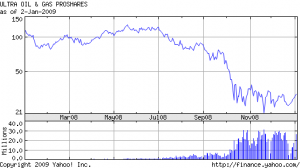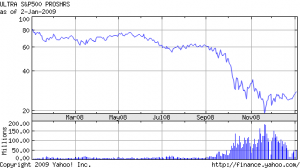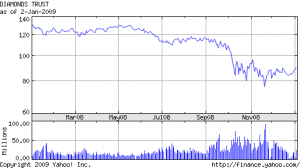The plight of homeowners delinquent on their mortgages has been the focus of much debate lately. There have generally been two major lines of thinking:
-The best course is to let free market principles apply. If homeowners cannot afford the mortgage payment, the old fashioned remedy of foreclose should take place, turning an overburdened homeowner into a renter.
-Those more inclined to assess the loss of a home in terms of human suffering rather than as an economic equation have sought to provide relief to struggling homeowners by modifying the terms of the original mortgage.
As the number of mortgages in default grew, the situation attracted the attention of politicians. Their viewpoint seemed to focus on helping the homeowner stay in the home, regardless of cost.
The governments’ efforts to encourage the banking industry to cure the foreclosure problem through voluntary participation in loan modifications was a failure. For a variety of reasons the loan mods were not working. Data from the Comptroller of the Currency shows that over 50% of modified loans re-defaulted within 6 months. With many loan mods, payments went up for the borrowers and principal was hardly ever reduced. The loan mods actually left many borrowers in a worse position than when they started. In addition, most of them had negative equity before and after the loan mod. The negative equity position locked them into the house, unable to sell or refinance.
Today, from Washington, a new solution – giving bankruptcy courts the power to alter the terms of the original mortgage.
Lawmakers Set New Mortgage Bankruptcy Bill
WASHINGTON (Reuters) – Legislation designed to stem foreclosures by allowing bankruptcy judges to erase some mortgage debt will be introduced by Congressional Democrats on Tuesday, and hopes are high that it will pass after a similar plan failed last year.
“Economic conditions have only worsened since we last debated this plan,” said Rep. Brad Miller, a member of the House Financial Services Committee who plans to introduce a bankruptcy reform bill on Tuesday. “Until we stop the slide in foreclosures and falling home prices, the economy will get worse still.”
The legislation would change allow bankruptcy judges to modify home loans in the same way that they currently may modify other unsettled obligations, such as credit card debt.
The lending industry has said that allowing bankruptcy judges to modify mortgage obligations would change how they weigh risk. Currently a lender knows that it has recourse to foreclosure if a borrower fails to meet mortgage payments, but the lender does not have to factor in the possibility that the payments it receives could be decreased by a judge.
What will be the impact of allowing bankruptcy judges to discharge (cram-down) mortgage debts? Some of the issues and questions to be considered include the following.
1. Interest rates are correlated to risk – that’s the way things work in a free market. If a mortgage loan is made with the risk of principal impairment by bankruptcy, this risk has to be priced into the loan rate. Reducing mortgage principal by legislative fiat may bring unintended adverse consequences.
According to The Mortgage Bankers Association “It is our position that if this proposal were to become law, mortgage rates would increase by at least one and a half points. In addition, lenders will be forced to require higher down payments and charge higher costs at closing. All these increased costs would be necessary to account for the new risks that lenders will face when judges decide to change how much borrowers owe on their mortgages.”
2. Since total mortgage delinquencies are less than 10% and not all of these cases will wind up in bankruptcy, cram downs might help less than 5% of mortgaged homeowners. If the MBA is correct and mortgage rates rise significantly due to cram downs, expect a significant backlash from the other 95% of mortgaged homeowners who will wind up paying for the losses through higher interest rates.
3. According to The Housing Wire, 50% of Americans oppose bailing out troubled homeowners. “These findings indicate that there are significant political barriers to proposals now being drafted in Congress”
The bankruptcy discharge of a mortgage balance will be viewed by many as the ultimate bailout. The final compromised bill may result in contorted regulations that ultimately benefit few homeowners.
4. The free market has a solution for “troubled homeowners” which is known as foreclosure. Does the free market solution lose all merit merely because the number of foreclosures increased dramatically due to imprudent borrowing and lending?
5. According to Rep. Brad Miller, “Until we stop the slide in foreclosures and falling home prices, the economy will get worse still.” Rep. Miller is confusing a symptom of the disease as the cause. Falling home prices did not cause our economy to weaken. The housing asset bubble that burst was due to reckless lending, fueled by a government providing easy credit and obsessed with making everyone a homeowner. Political interference in economic matters usually delays a solution by impeding the free market forces that will ultimately prevail anyways.
6. If the mortgage cram down bill is passed, it will drive many homeowners to bankruptcy, lured by the promise of wiping out mortgage debt. The loan modification program allowed the banks to pretend that the amount they were owed would still be repaid over time. When the loan gets reduced in bankruptcy, this illusion will be gone. More write offs by the banks could lead to a self defeating cycle of tighter credit, stricter mortgage underwriting, weaker housing prices and further bailouts.
7. How many homeowners that are incapable of handling the burden of home ownership will be allowed to remain in their homes, only to face foreclosure again at a later date?
8. Continued massive government support of the mortgage market will be necessary since investor demand for mortgage securities is likely to remain low due to collapsing housing prices and the risk of mortgage debt being discharged by bankruptcy. How does an investor properly price a mortgage security where the asset value underlying the security is declining and also face the risk that the principal investment may be impaired by court decree?
9. The Fed is now expected to absorb virtually all of the new mortgage backed securities this year. With the Fed extending its purchases into virtually every asset class, a question comes to mind. As the Fed assumes the losses of all failing economic entities in the country, at what point does the US Government begin to share the credit quality of those being bailed out?


